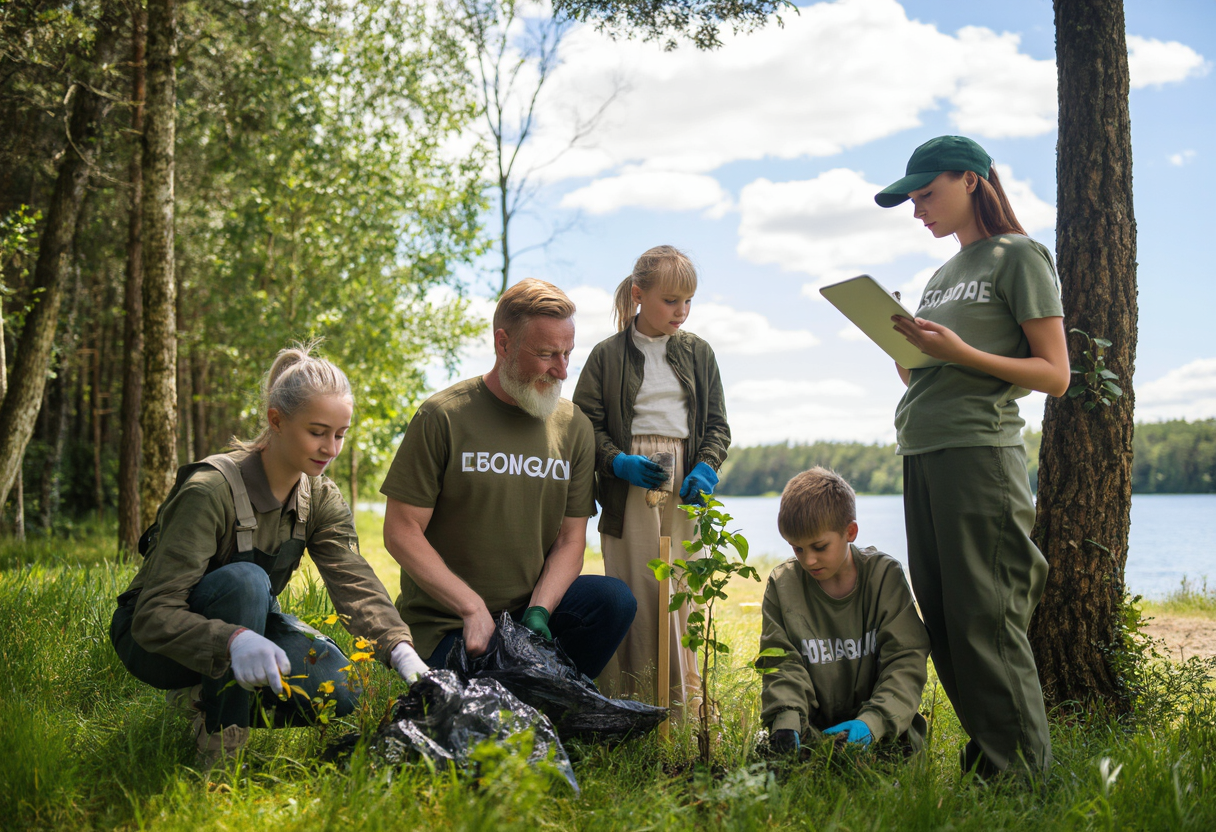Why Environmental Education is Key to a Sustainable Future
Environmental education plays a crucial role in fostering a sustainable future. By equipping individuals with knowledge about environmental issues and promoting responsible behaviors, it enhances community engagement and inspires action. This article explores the multifaceted impact of environmental education, highlighting case studies and innovative practices that cultivate ecological stewardship.
Understanding the Importance of Environmental Education
Environmental education is an essential tool in addressing the complex challenges that our planet faces today. It empowers individuals with knowledge about ecological principles and human interactions with nature. Through this, Environmental Education cultivates a sense of responsibility toward the environment, encouraging sustainable practices. Schools, organizations, and community groups play a vital role in disseminating environmental education, shaping future generations to prioritize ecological conservation. Ultimately, when people are informed about environmental issues, they are more likely to engage in behaviors that protect our planet. However, it’s crucial to recognize the diverse formats that environmental education can take, from informal programs to formal academic curricula, which enhances its accessibility.
Innovative Approaches to Environmental Education
Several innovative approaches are reshaping the delivery of Environmental Education. For instance, experiential learning through outdoor activities enables students to connect directly with nature. Schools that have incorporated outdoor classrooms report higher engagement levels among students. Furthermore, technology enhances the learning experience through interactive tools such as virtual reality, which provides immersive explorations of different ecosystems. The use of social media platforms also facilitates awareness campaigns, allowing individuals to share experiences and resources widely. These innovative strategies not only make learning about the environment exciting but also create a community of informed individuals dedicated to ecological advocacy. Additionally, this integration of technology fosters collaboration and knowledge-sharing among various educational entities.
Challenges in Implementing Environmental Education
Despite the numerous benefits of Environmental Education, challenges abound in its implementation. Funding often limits programs, particularly in under-resourced schools. Moreover, curricula can sometimes lack the necessary emphasis on practical environmental issues. Teachers may feel ill-equipped to provide comprehensive environmental education owing to a lack of training. Importantly, addressing these challenges requires collaborative efforts from government, communities, and educators to allocate resources effectively. There’s also the need for continued professional development to prepare educators for delivering impactful environmental education. This collective approach can help establish a more robust framework for teaching about the environment, ensuring sustainable practices are instilled in future generations.
Case Studies: Successful Environmental Education Programs
Several organizations worldwide exemplify successful Environmental Education initiatives. For instance, the Eco-Schools program empowers schools to adopt sustainable practices by integrating them into the learning process. This global initiative enables students to engage in hands-on projects related to energy conservation, recycling, and biodiversity. Another notable example is the Children and Nature Network, which promotes the connection between children and nature, emphasizing outdoor activities to foster appreciation for the environment. These case studies illustrate how structured Environmental Education can drive community engagement and inspire lasting behavioral changes. Emphasizing local environmental issues enables students to see the direct impact of their actions on their communities and the planet.
The Role of Community in Environmental Education
Communities play a pivotal role in the success of Environmental Education. Local initiatives foster partnerships between schools, local government, and environmental organizations, creating a network that supports educational efforts. These collaborations can lead to impactful projects such as community gardens, wildlife habitats, and cleanup events that enhance participants' understanding of local ecosystems. Moreover, involving community members in educational sessions helps to bridge the gap between theoretical knowledge and real-world applications. The community's involvement not only enriches the educational experience but also builds a culture of sustainability that extends beyond the classroom. Encouraging volunteerism in these initiatives further instills a sense of ownership, ensuring that environmental stewardship becomes a community norm.
Looking Ahead: The Future of Environmental Education
The future of Environmental Education is promising yet necessitates continuous evolution. As global environmental challenges intensify, the need for informed citizenry becomes ever more critical. More robust policies and frameworks focused on environmental education in classrooms can propel the movement forward. Fostering collaborations among educational institutions and environmental organizations will ensure that best practices are shared, and innovation is prioritized. The integration of interdisciplinary approaches, incorporating science, art, and technology into curriculum design, can also promote engagement and understanding. Ultimately, the enduring aim of Environmental Education should be to cultivate a generation that not only understands environmental challenges but is also equipped to tackle them innovatively and collaboratively.
